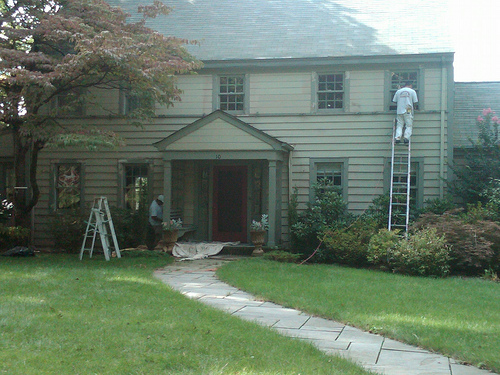9 Things You Need To Know Before Your Home Exterior Painting Project Begins
Exterior painting is not one of those things you wake up to, roll up your sleeves and start doing. It is a delicate project. It calls for a fine taste of colors and real painting skills. It also calls for patience and attention to detail. You will have to stand for hours to execute ideas and see them metamorphose into fruition. But that is not enough. You must also take into account a few factors that will facilitate a smooth painting process. These factors often include:

Mother Nature might not be your friend
There is no two way about it. You just have to take into account the weather patterns of your town or city. Select a time of the year when the weather is extremely friendly. That is, there should be little or no rain and low humidity. The reason behind this is pretty much obvious. Paint needs time to dry, often at least a day. It won’t get absorbed and dry on moist or humid surfaces. You will also need the mild weather conditions to start and finish the whole project on time.
Quality paint does cost more
Quality paint certainly brings you better paint quality. Take note though, as far as quality is concerned, you have to spend quite a fortune. The best paints today feature eco-friendly and side effect free components. That factor alone sets them aside from conventional paints used for residential exterior painting. It gets better with the fact that paint technology is always improving. You can easily come across brands that can guarantee you durability, better coverage and impeccable aesthetics. Do not skimp on quality in the name of saving money. The cheap brand will in the end turn out to be costly. You may have to consider repainting every now and then.
Sand and wash before you start
This is all about creating a solid surface before applying primer or undercoats. Paint hardly adheres to rough and dirty surfaces. You have to clean the siding before trimming the surface. Be sure to let the surface dry before you can begin sanding. You can then scrap any peeling paint and stubborn stains to smoothen the surface and finally paint.
Rotten surfaces need to be addressed
Rotten surfaces will waste your paint at best and deteriorate at worst. That is as far as wooden surfaces and siding are concerned. You only have two options in that regard. Wood trim with fresh components or replace the siding. For small areas, consider using wood hardeners. Then match the hardener with exterior filler products. Remember to sand the surfaces before painting.
Using a primer is essential
Any exterior painting expert will advise you to apply a decent coat of primer, sand then paint. That has always been the rule of thumb for ages. But things are changing rapidly. New paint technologies have blended primer and paint qualities. You can now have primer and paint in one product. That means you only need to clean your surface and sand before painting. Take note though, such paints are not meant to help you save money but time. They, however, look much better than conventional paints. They also last for long. Be sure to consider what their reviews have to say before going for them.
Mixing paint in large cans
This is a trick most painters know but only a few use. Mixing cans of the same paint color into sizeable containers will go a long way to ensure you have uniform color on your surfaces. The last thing you would want is a wall with three quarter’s light paint and a quarter with some other shade, distinct enough to be noticed from a few meters away. The trick is referred to as ‘boxing the paint’. Unlike the aforementioned tip, this one can help you save time and paint, which is also to say it can help you save money. It discourages waste.
Creating grit
Painted floors and porches can become slick with paint coats. So add some sand to the paint. That will go a long way to add traction. You can use play sand or go for special additives manufactured to provide you with your desired texture.
Utilize the top to bottom technique
You must have heard about it already. Paint from the top as you work your way down. It is all about letting the paint help you control streaks. The trick is to work with gravity. Not against it. Because drips and sometimes spills are inevitable, this method will allow you to reduce mishaps and mistakes in the direction you are working towards.
Prepare the location for exterior painting
Painting can be really messy. It gets worse where one wants to embark on a massive exterior painting Toronto project. So take time to cover the ground and other surfaces that can be easily stained. Cover your flowers, bushes, and outdoor furniture by using drop cloths or any other alternative within your means.